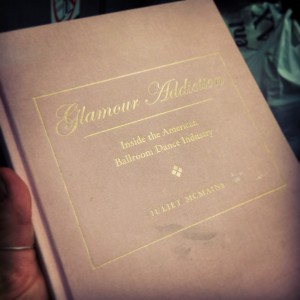
Since this is my first post, I suppose I should introduce myself and set the scene a little bit. I write this with a bottle of spray tan, rubber gloves, a foam brush, and a Tupperware container to my right, and a box of false nails to my left. I’m a rising senior in Gallatin, concentrating in something that may or may not end up being called Dynamic Awareness in Dance and Theatre. And I’m a dancer. My background is primarily in flamenco, salsa, and musical theatre styles, but my partner (Abdiel Jacobsen) and I have been dancing together for five years. We decided in 2014 to pursue American Rhythm ballroom together.
Last fall, my advisor Julie Malnig suggested I read Juliet McMains’ “Glamour Addiction,” an anthropological study of the history and cultural workings of Dancesport in America. She had perfect timing; my partner and I were committed to our first competition in January of 2015. “Glamour Addiction” is a really wonderful read, but terrifying when one is just setting out to compete and participate in this world, as McMains deftly underlines majour patterns of cultural appropriation, racism, and sexism. With the DASR grant, I am working to continue and update McMains’ examination of the American Ballroom Dance industry, with a narrower focus on the role of the body’s value.
I am particularly interested in what is defined as femininity in this culture. Beyond biological sex, ballroom is particularly concerned with the “packaging” of femininity—and I have heard it referenced in this way over ten times in my six months of experience—whether it be of the body (physical shape, recognizable female attributes, skin tone, hairstyle, etc.) or outside of it (appropriate makeup, nails, shoes, flirtatious conversation with the opposite sex, and comportment both on and off the dance floor).
For my project, I am focusing primarily on female bodies, but since ballroom operates in a strict gender binary, one of the best ways to understand “femininity” is to compare it to “masculinity” as defined by this culture. This makes interactions with men in the ballroom community just as illuminating as those with women. Interestingly enough, ballroom men have been more open conversationally, more willing to talk honestly about their experiences in this world. Many women at rehearsal studios or in competition dressing rooms are either too focused (usually on assembling the necessary “packaging”) to chat, or they barely speak English. The majority of female professional competitors in the New York area and beyond hail originally from Eastern European countries such as Russia, Georgia, Ukraine, Czech Republic, and so on. This adds another layer of cultural heritage to the understanding of womanhood in ballroom.
Thus far, my research has been conducted in Dancesport-sanctioned events, and through interviews with my partner, friends, colleagues and fellow competitors in the ballroom scene. This week, for example, we are competing at the Manhattan Dance Championships in Brooklyn, NY. Professional, amateur, senior and youth couples have traveled here from all over the country—and a few from outside the USA—to compete for prizes in their respective categories. We have only participated in five competitions so far, so we do not have high hopes to win. But we will be satisfied if we can get the attention of at least one or two judges. From what we’ve been told, we can expect a certain amount of mild hazing in the first year of competing, particularly with regard to our “packaging.” This has been phrased various ways: “They’ll hate you til they love you,” or “They’re putting you through your paces,” or “You have to pay your dues” – quite literally. Registration fees are significant barriers to this world that make it a financially exclusive endeavor. But that’s a whole different story…
I will check back in with more information after this competition. Wish us luck!
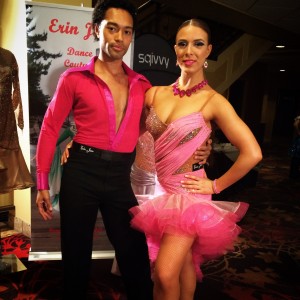


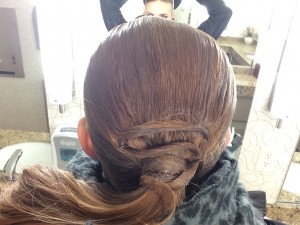
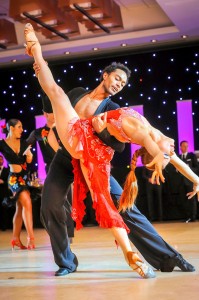
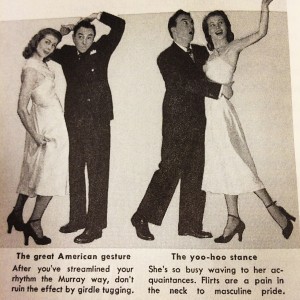
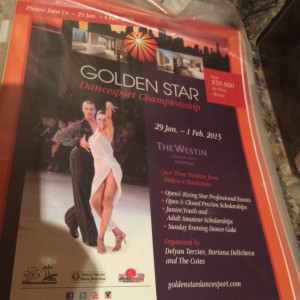
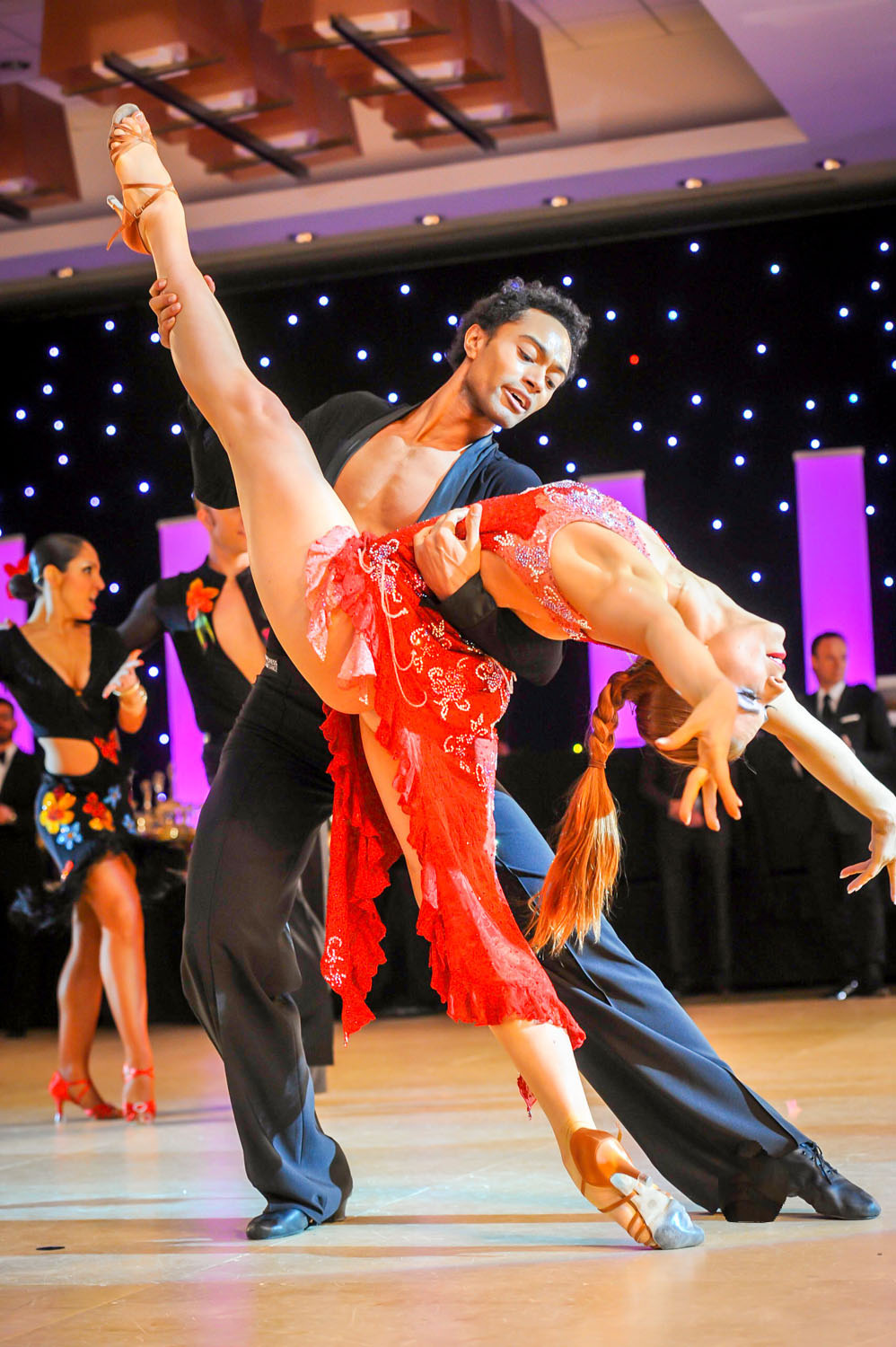
Hi Kelsey!
Thanks for your wonderful post. And thanks for your comment on my post as as well, I’ll respond soon!
There were a couple of things that I’d love to know more about:
I thought your discussion about hazing was really interesting, especially since it seems it is very much out in the open that this is a part of the process as a newcomer. How does this hazing play out in terms of packaging gender? How does this exclusivity or need to prove oneself play into our understanding of how the gender binary of femininity/masculinity is defined in this culture?
It also seems like partnering in this dance is essential the the anthropological understanding of it: how does the male female partnership play into this, both in the dance form–and socially as well?
Good luck with your research, I really look forward to hearing more once you’ve finished the competition!
Hi!
I hope the competition went well! The “poster shot” looks incredible.
This idea of packaging that you discuss here is so interesting to me. As competitive (and even non competitive) is inherently performative an appropriate costume makes sense as a part of the overall performance. What I was especially curious about was when you mention that a woman dancer’s behavior is under scrutiny even off the dance floor. You include in that list “flirtatious conversation with the opposite sex” which seems stressful and a little horrifying to me, that even offstage you must maintain the character of a sort of dance persona. Have you observed people maintaining facades throughout a competition? That seems like it would be exhausting, but also an interesting sociological product of the competition culture.
I was also struck by the idea of hazing around appropriate “packaging.” It just made me think of other places where this happens, like business offices and high schools. The social pressure to appear in an appropriate costume or package for a specific culture is such a pervasive phenomenon. Super interesting perspective!